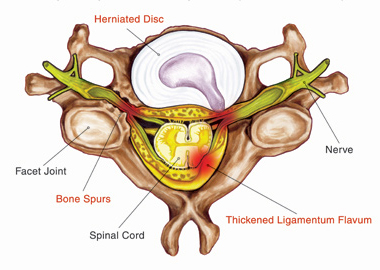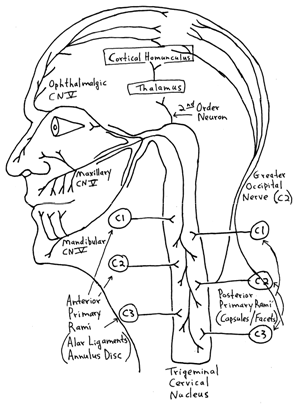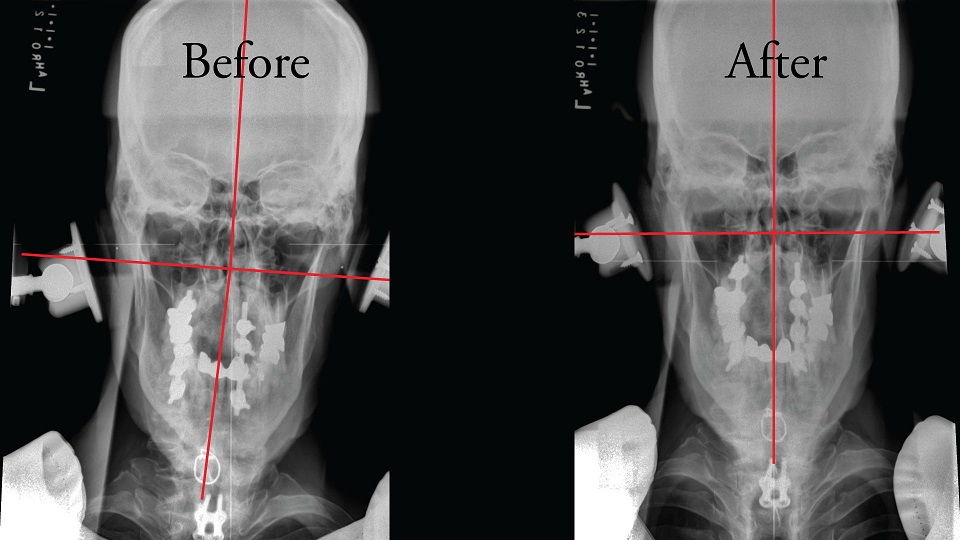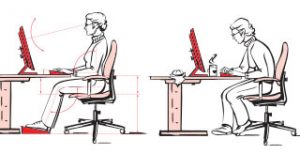- New Patient Line:
- (907) 336-0200

 Back in the 1920s it was pretty rare to find women in the medical field. In fact, female students at Baylor University College of Medicine were told they would need to score grades 10 points higher than male students in order to graduate with “equal standing.”
Back in the 1920s it was pretty rare to find women in the medical field. In fact, female students at Baylor University College of Medicine were told they would need to score grades 10 points higher than male students in order to graduate with “equal standing.”
But that didn’t stop Ruth Jackson from graduating from Baylor in 1928. Eighth in her class and against her father’s wishes. And she went on to become the first female member of the American Academy of Orthopaedic Surgeons.
Dr. Jackson had a special interest in injuries of the cervical spine. She suffered with significant pain herself following an automobile accident in 1936, and in 1956 she published her findings from the collected data on over 15,000 patients in her acclaimed and authoritative book, The Cervical Syndrome.
Dr. Jackson’s Cervical Syndrome is a gold-mine of information when it comes to understanding the neurological changes that trigger chronic headaches (and worse: migraines). More important though, is how this information has helped us understand how to correct the root cause of chronic headaches and migraines.
The Cervical Syndrome triggers headaches and migraines via irritation of cervical nerve roots.
Every nerve in your body has its beginning at either the spinal cord or the brain stem. Whether it’s in your big toe or behind your eyeball, if you follow that nerve back, you end up at the spinal cord. The cervical nerve root is the spot where that nerve first branches off the spinal cord.

Irritation of cervical nerve roots results in pain that feels like it comes from the head, arms & other areas.
It’s also the spot where things can go completely wrong.
In order to get to the skin, muscles, blood vessels and sensory receptors that send and receive messages through the nerve, it has to find a way out of the bony spinal column that surrounds the spinal cord. Small openings between each of the spinal bones (called intervertebral foramina) provide a perfect escape route.
But when an accident or injury changes the normal position and movement of the neck bones, that perfect little opening gets booby-trapped. One wrong movement, sleeping in the wrong position, or a little too much stress, and the trap is triggered. Life becomes a bit like navigating a minefield–only you have to do it while going to work, taking care of the kids and running errands. Whether you step on a landmine or not, the kids still need to get picked up from school.
And if you’re lucky, you get a pretty good idea of where the traps are located and how not to trigger them.
Running a minesweeper around the cervical nerve root (the trigger point for these chronic migraine headaches) reveals that these little landmines come in several distinct types:
- The Inflammatory Type – inflammation in the joint capsule lying next to the cervical nerve root releases chemical irritants
- The Structural Type – relaxation or tearing of the joint capsule and other ligamentous structures surrounding the nerve root directly irritates the nerve
- The Disc Type – damaged discs between cervical vertebra can encroach upon the opening for the nerve root creating irritation by taking up space
- The Bony Growth Type – abnormal bone growth can develop in the opening for the nerve root resulting in less space for the nerve to exit the spine
Most often these process are viewed as the cause of the problem in many types of headaches and migraines. And up to a certain point that’s true. Looking a little closer, however, reveals that each of these causes is in fact an effect of a larger more comprehensive problem. And it’s this problem that is at the root cause of so many chronic migraine headaches. But before we get to that, let’s look at why headaches, and especially migraines, seem to involve so much more than just head pain.
The exact types of symptoms that accompany chronic headaches and migraines depend upon which nerve roots are being irritated.
Nerves that transmit pain impulses that result in what’s felt as a headache or migraine also send signals for muscle control, equilibrium, sensory information and just about everything else. This is the reason why migraine headaches often involve a host of symptoms depending upon which nerves are irritated.
For example, if the C1-C2-C3 nerve roots are involved, typical migraine symptoms include:

Upper cervical nerve roots branch out to transmit sensory information from the head and face.
- Neck pain
- Limited neck motion
- Migraine headaches that usually start at the back of the neck or base of the skull and go on to involve one or both sides of the head and the area in or around the ear
- Blurred vision (~20% of the time)
- Dizziness & nausea
- Numbness of the side of the neck or head
- Tight neck muscles
If the C4 nerve root gets involved it’s not uncommon for migraines to be accompanied by shortness of breath, heart palpitations and a tightness or buzzing feeling in the chest. C5, C6 and C7 nerve roots start to involve the shoulders, arms and hands. And it’s common for these people to wake up with numbness and tingling in the hands and fingers.
Sometimes things can get even stranger. Like having the pupil on the affected side constantly dilated–something I saw in my office just recently.
So what’s missing in the treatment of chronic headaches that keeps people from experiencing significant, long-term relief?
If we go back to our booby-trap/landmine analogy, it looks something like this: the most common treatments for chronic headaches and migraines focus on disarming the landmine, when the real solution is figuring out who’s laying them down in the first place.
Which isn’t to say that direct treatment of the inflammation, capsular and ligamentous irritation, disc damage and bony growths shouldn’t be done at all. But rather, that if we can fix the problem causing these things to occur in the first place–or in some cases, what’s keeping them from healing on their own–then we’re eliminating the source of the problem. And that means much greater success when it comes to resolving the issue of chronic headaches and migraines.
Dr. Ruth Jackson explains that “The most common cause of irritation is abnormal motion or subluxation of the joints due to relaxation of the capsular and ligamentous structures following trauma.” In other words, after an accident or injury the soft tissues in the neck that are responsible for keeping vertebrae in alignment are damaged. This damage causes misalignment of joints and abnormal movement of the head and neck.
Alteration of the normal biomechanics of the head and neck becomes both the source of the nerve root irritants mentioned above, as well as the reason that migraine headaches persist despite repeated treatment. The only way left to resolve this problem is to restore the normal alignment, and thus movement, of the head and neck.

Orthogonal alignment: a stable correction aligns the head & neck vertically while maintaining specific 90° angles between C-1 and its superior and inferior partners. Click to enlarge.
The NUCCA procedure is the most effective way to correct the altered cervical biomechanics that result in chronic headaches and migraines.
NUCCA practitioners specialize exclusively in the mechanics of the head and neck. Differing from the traditional chiropractic approach to spinal alignment, the NUCCA procedure relies on an advanced system of measurement to identify the specific misalignment pattern that needs to be corrected. Rather than a single, forceful thrust to an individual vertebra, the NUCCA correction involves a number of extremely small, gentle movements that shift the alignment of the entire head and neck simultaneously. Post X-ray studies are then able to confirm that a successful correction has been made.
The NUCCA procedure is unique in that it creates a measurable correction of the altered cranio-cervical alignment that results in chronic migraine headaches. By correcting the alignment of the entire neck and head simultaneously, NUCCA is able create a stable correction that remains intact over long periods of time, giving chronic issues like migraine headaches the time they need to resolve.
The NUCCA organization maintains an updated directory of certified practitioners on it’s website. If you’re trying to treat issues like chronic migraines without much success, their online tool can help you find out if there is a practitioner near you.

